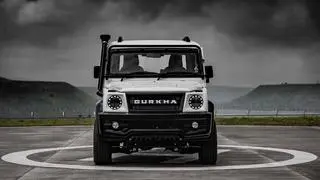In recent years now, Yamaha has been driving home the message that it is increasingly becoming a mobility company, which will look beyond its domain expertise of motorcycles.
This puts in context its keenness on developing models such as the three-wheeled Tricity as well as the sports ride concept car, which was first showcased at the 2015 Tokyo Motor Show.
While automobiles will mark an exciting foray or sure, the new President & CEO of Yamaha Motor made it clear that there is still a lot of work ahead.
During an analysts briefing in Japan last fortnight to discuss the 2017 financial results, Yoshihiro Hidaka reiterated that the company would enter the business only if it could make automobiles with the unique style of Yamaha. “This means that we will commercialise automobiles if we can make them with different methods and technologies to existing automakers, with lower investments, clearing safety standards, and furthermore with uniquely – Yamaha driving performance,” he said. Hidaka was also candid enough to admit that the company was “keenly appreciating” the difficulties in automobile development that was taking longer than it had initially anticipated.
“We understand that if we cannot make automobiles with the unique style of Yamaha, we will need to change our approach at the appropriate timing,” he said.
Top priority
The message coming through is that this is not top priority and the project may even be shelved if things do not go according to plan. It may also mean that Yamaha would rather pay top focus to its core business of bikes where India and ASEAN are critical growth engines.
Hikaka also made his intent to step on the gas and get things moving far more quickly. “A point I would like to improve on is the sense of urgency,” he said. “While our corporate location is something of a handicap, as the global environment changes ever more quickly, I want to increase by even a little the speed at which we change.”
This could mean that global operations will be under pressure to deliver on their targets quickly. For now, Indonesia is Yamaha’s largest market with India still at No.3 behind Vietnam. However, this part of the world is the world’s largest two-wheeler market along with the fastest growth potential. It is in countries such as India where Hidaka will be keen on getting things moving at a faster pace.
As for ASEAN, the decline in demand in Indonesia is bottoming out with sales turning positive last year in the smaller islands of Sumatra and Kalimantan. He was of the view that rising incomes would help fuel demand. Things were also looking up in Vietnam and the Philippines. “Our strengths are in scooters and we plan to retain our high scooter market share,” stressed Hidaka.
The Yamaha chief also acknowledged that development expenses have been rising lately owing to more investments in new businesses as well as to new motorcycle regulations where 2018 and 2019 have been the peak periods.
“As regulations in new markets are being toughened in 2020, such as the introduction of BS-VI in India and Euro 5 in Europe, development expenses have increased to 5 per cent of net sales for the preceding period,” said Hidaka. “We anticipate that motorcycle-related development expenses will settle back from 2020 in the next medium-term management plan.”







Comments
Comments have to be in English, and in full sentences. They cannot be abusive or personal. Please abide by our community guidelines for posting your comments.
We have migrated to a new commenting platform. If you are already a registered user of TheHindu Businessline and logged in, you may continue to engage with our articles. If you do not have an account please register and login to post comments. Users can access their older comments by logging into their accounts on Vuukle.